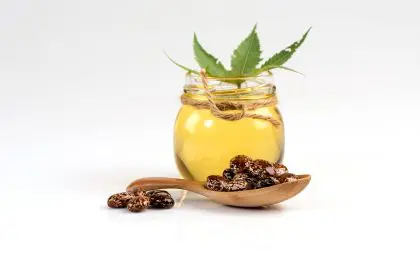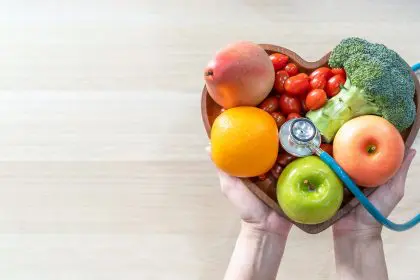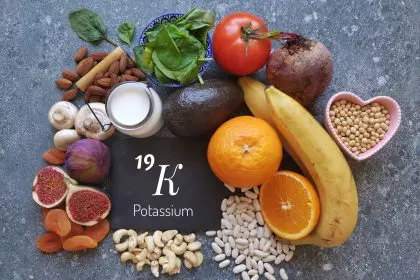A groundbreaking discovery is offering new hope to the estimated 70 million Americans living with chronic pain. Recent findings from the Whyalla Intergenerational Study of Health have revealed that what we eat might be the key to unlocking relief from persistent discomfort that affects daily life. This revolutionary research challenges traditional approaches to pain management and opens doors to more natural, sustainable solutions.
Food choices that fight back against pain
The comprehensive study, which followed 654 participants, uncovered remarkable connections between diet quality and pain levels. Researchers found that people who consistently chose nutrient-rich foods experienced notably less chronic pain compared to those with poor dietary habits. This revelation is particularly significant for women, who showed the strongest positive response to dietary improvements.
The study’s participants who maintained a high-quality diet reported up to 40% reduction in their daily pain levels, a finding that has captured the attention of pain management specialists worldwide.
Why your kitchen might be your best medicine cabinet
When it comes to fighting chronic pain, your refrigerator might be hiding some of the most powerful weapons. The research points to five essential food groups that show promise in combating persistent discomfort:
1. Fresh fruits packed with natural anti-inflammatory compounds
2. Vegetables rich in pain-fighting antioxidants
3. Whole grains that help maintain stable blood sugar levels
4. Lean proteins supporting tissue repair and maintenance
5. Dairy products providing essential nutrients for bone health
These foods work together to create a foundation for pain relief that doesn’t rely solely on medication.
The hidden dangers of processed foods
Understanding how diet influences pain involves recognizing the destructive role of poor food choices. Processed foods create a double threat: they not only lack essential nutrients needed for healing but also contribute to weight gain, which puts additional stress on already sensitive joints and muscles.
Research indicates that consuming processed foods regularly can increase inflammation markers in the blood by up to 30%, directly contributing to increased pain sensitivity and slower healing processes.
Nature’s powerful pain-fighting ingredients
Scientists have identified specific compounds in whole foods that actively work to reduce inflammation and support the body’s natural healing processes. These include:
1. Omega-3 fatty acids found in fish and nuts
2. Antioxidants present in berries and leafy greens
3. Curcumin from turmeric
4. Capsaicin from chili peppers
5. Bromelain found in pineapples
These natural compounds have shown promising results in reducing inflammation and managing chronic pain conditions.
Creating your pain-fighting meal plan
Transforming your diet doesn’t mean completely overhauling your life overnight. Small, consistent changes can lead to significant improvements in pain levels. Start by incorporating these daily habits:
1. Begin each day with anti-inflammatory fruits
2. Include colorful vegetables at every meal
3. Choose whole grain alternatives over processed options
4. Select lean proteins for tissue repair
5. Maintain proper hydration throughout the day
The science behind food and inflammation
Recent studies have shown that certain foods can trigger inflammatory responses in the body, while others help reduce inflammation. Understanding this connection helps explain why dietary changes can have such a significant impact on chronic pain management.
The research indicates that people who follow an anti-inflammatory diet experience improvements in their pain levels within as little as two weeks, with continued benefits developing over time.
Beyond the plate: supporting your dietary changes
While food choices play a crucial role in pain management, they work best as part of a comprehensive approach. A well-rounded pain management strategy should include:
1. Regular physical activity tailored to your abilities
2. Consistent sleep patterns
3. Stress management techniques
4. Proper hydration
5. Social support systems
Success stories and real-world results
Across the country, people are discovering the power of dietary changes in managing their chronic pain. Many report significant improvements in their quality of life after making sustainable changes to their eating habits. These success stories often share common elements: gradual implementation of changes, consistency in maintaining new habits, and patience in allowing the body to respond to the improvements.
The future of pain management
As research continues to unveil the intricate connections between diet and chronic pain, healthcare providers are increasingly incorporating nutritional guidance into their treatment plans. This shift represents a growing recognition of food’s role in overall health and pain management.
Medical centers nationwide are now developing integrated programs that combine traditional pain management techniques with dietary interventions, showing promising results in reducing patients’ reliance on medication.
Making sustainable changes
The key to success lies in making sustainable, long-term changes rather than following temporary diets. Focus on:
1. Gradually introducing new healthy foods
2. Learning to read nutrition labels effectively
3. Planning meals in advance
4. Preparing healthy snacks
5. Understanding portion control
Expert recommendations for long-term success
Healthcare professionals emphasize the importance of personalization in dietary approaches to pain management. What works for one person may not work for another, making it essential to pay attention to your body’s responses and adjust accordingly.
The latest research suggests that consistency in maintaining a healthy diet is more important than perfection, with studies showing that following an anti-inflammatory diet 80% of the time can still provide significant benefits for chronic pain management.
This emerging understanding of the diet-pain connection offers hope to millions of chronic pain sufferers, providing them with natural, sustainable tools for managing their condition and improving their quality of life. As research continues and our understanding deepens, the role of diet in pain management is likely to become increasingly central to treatment approaches, offering new possibilities for those seeking relief from chronic pain.














